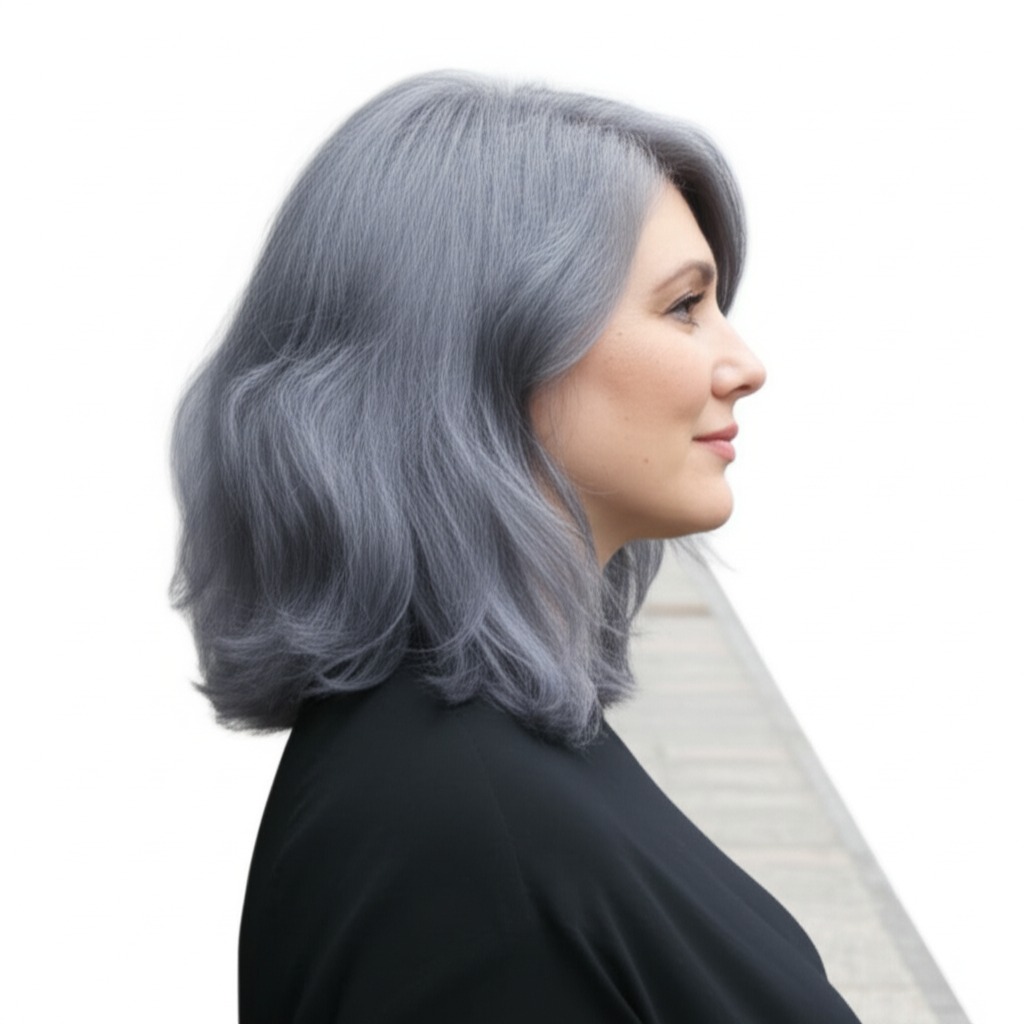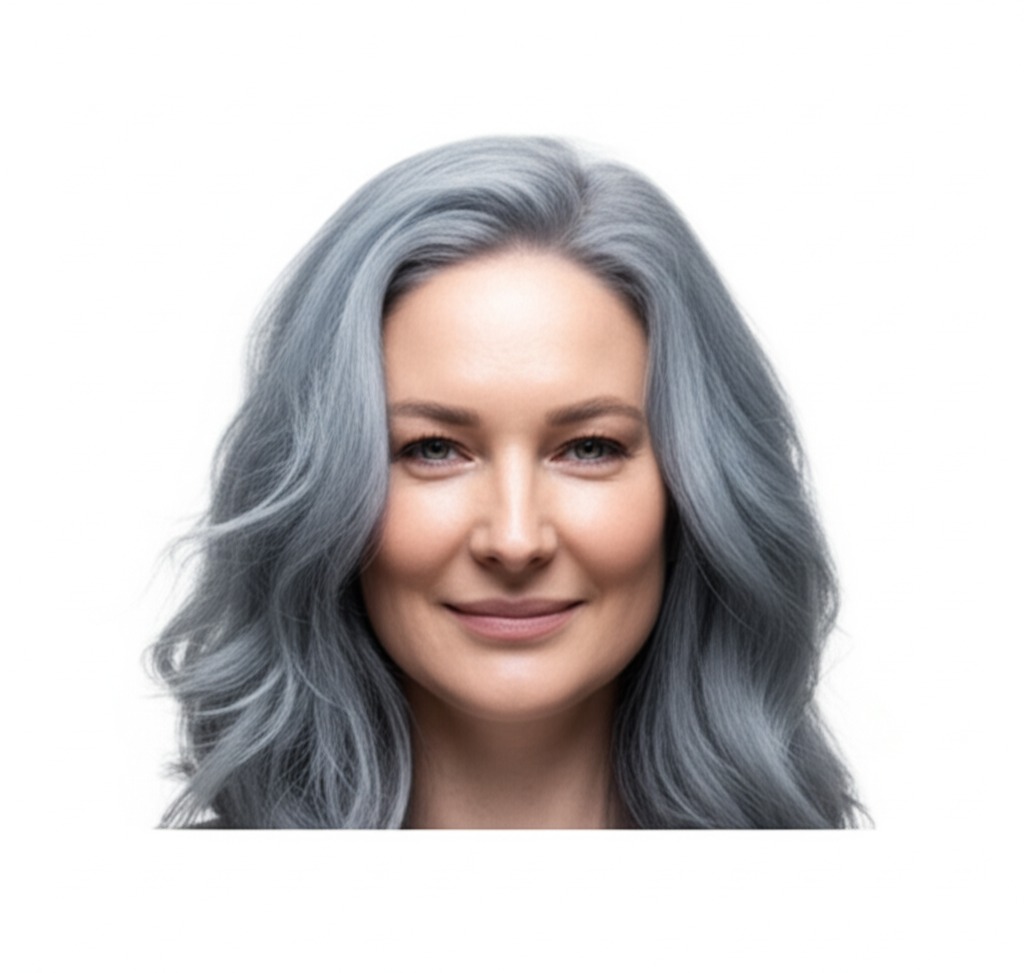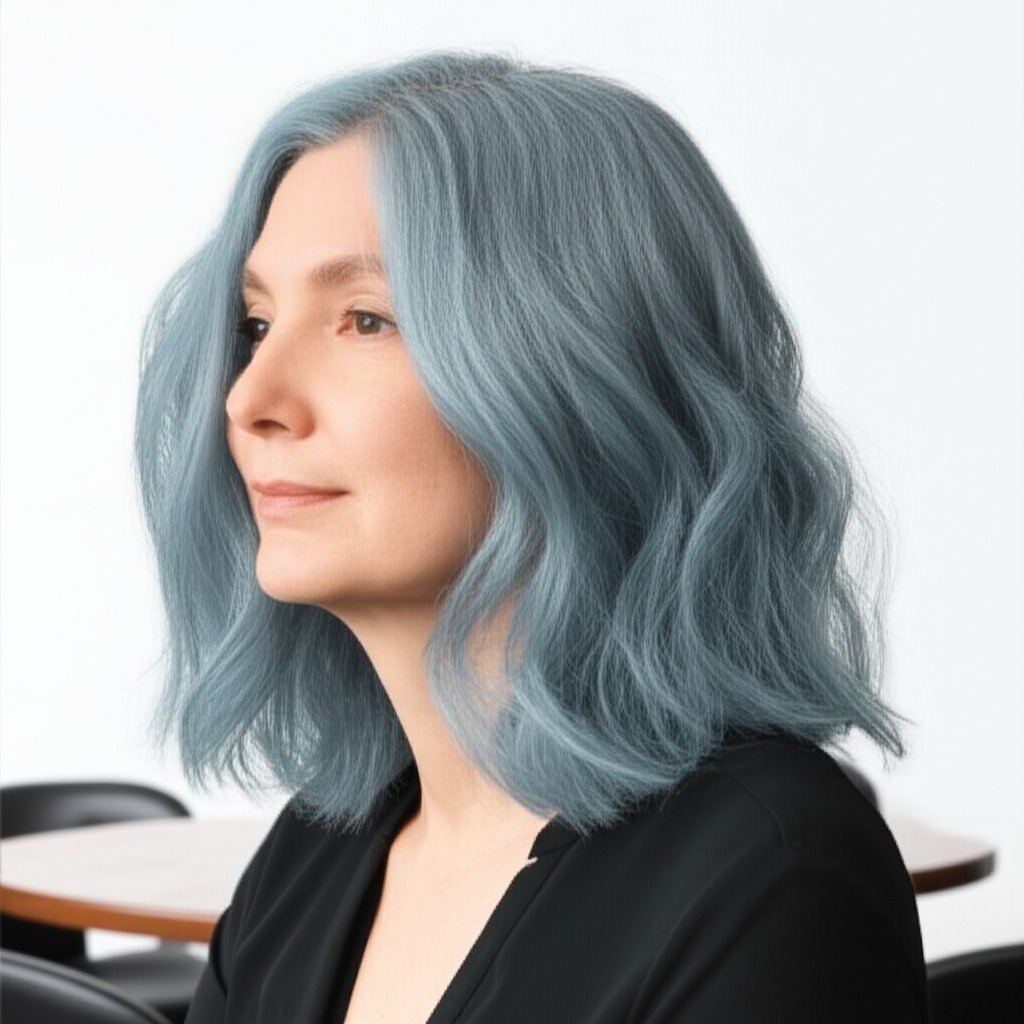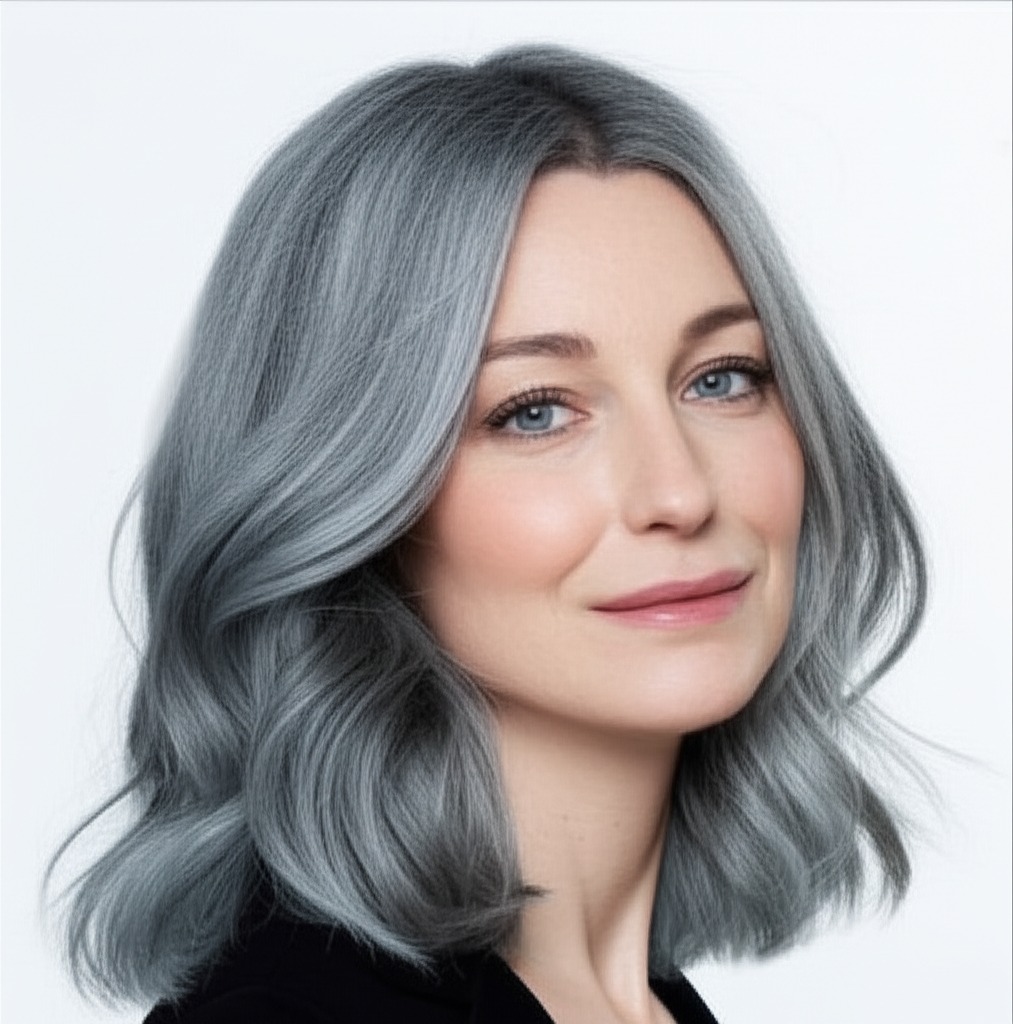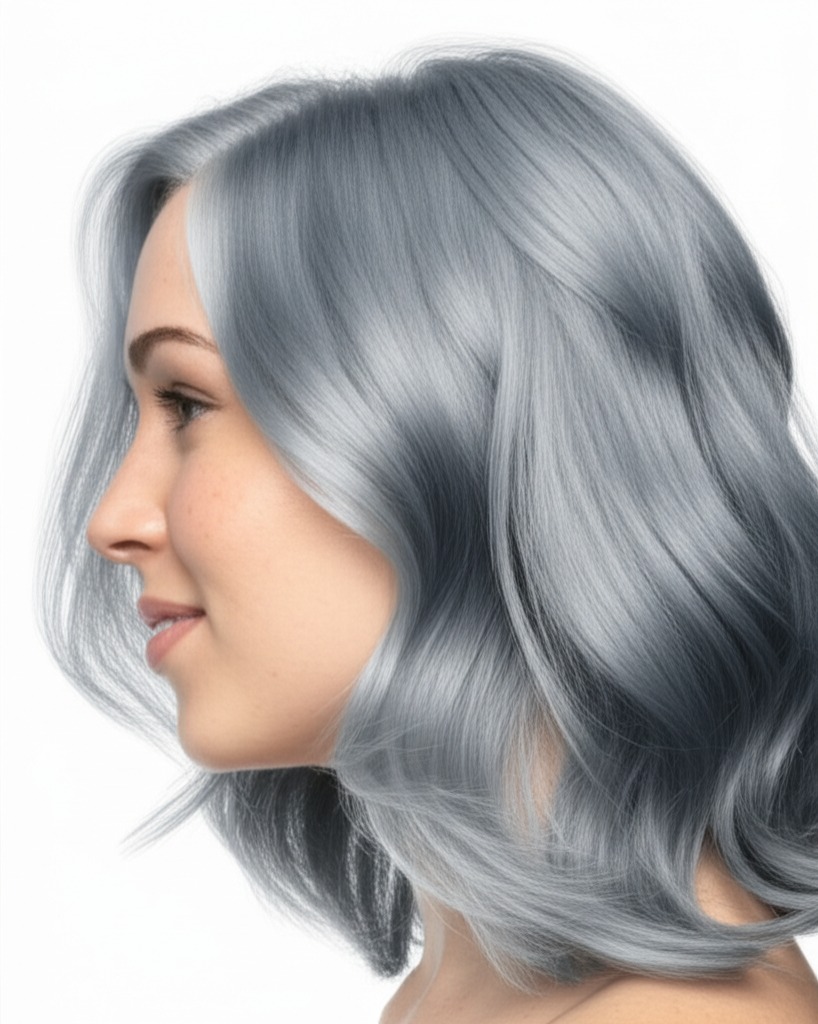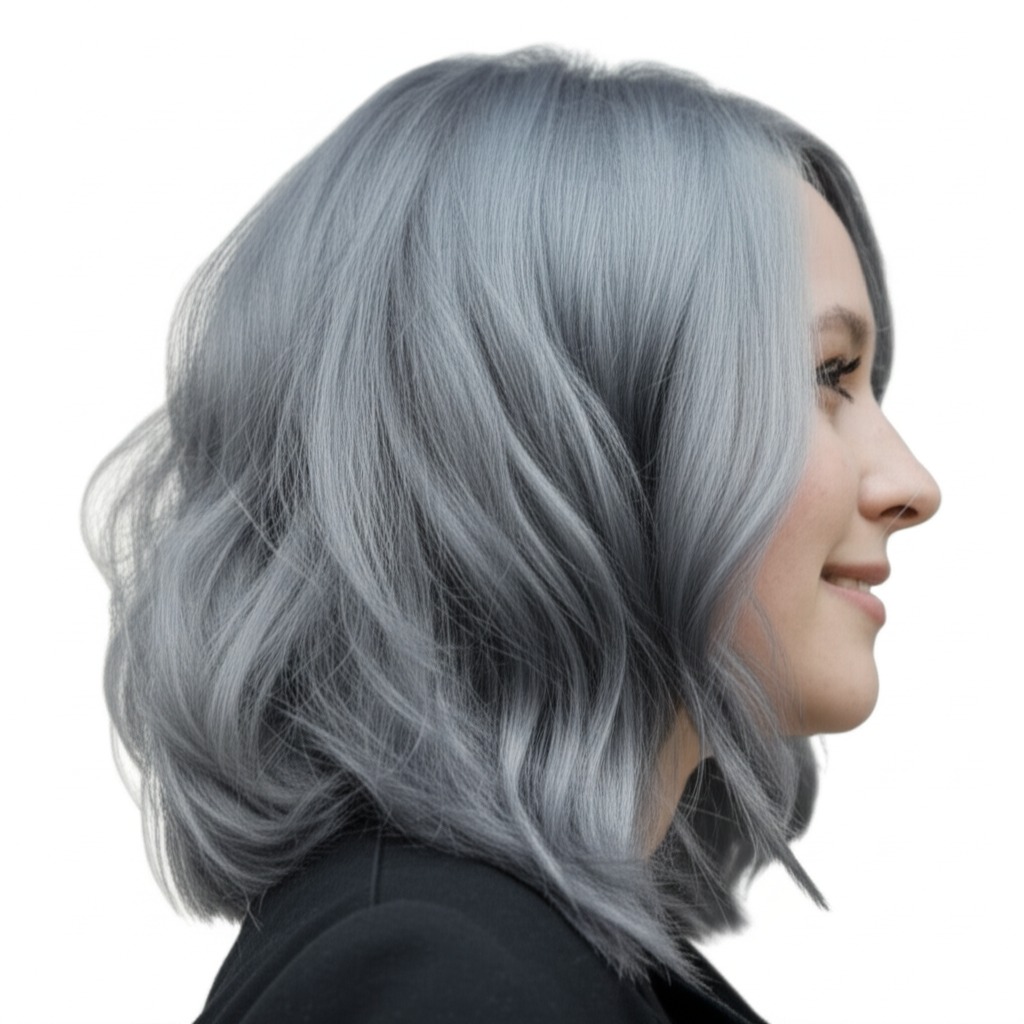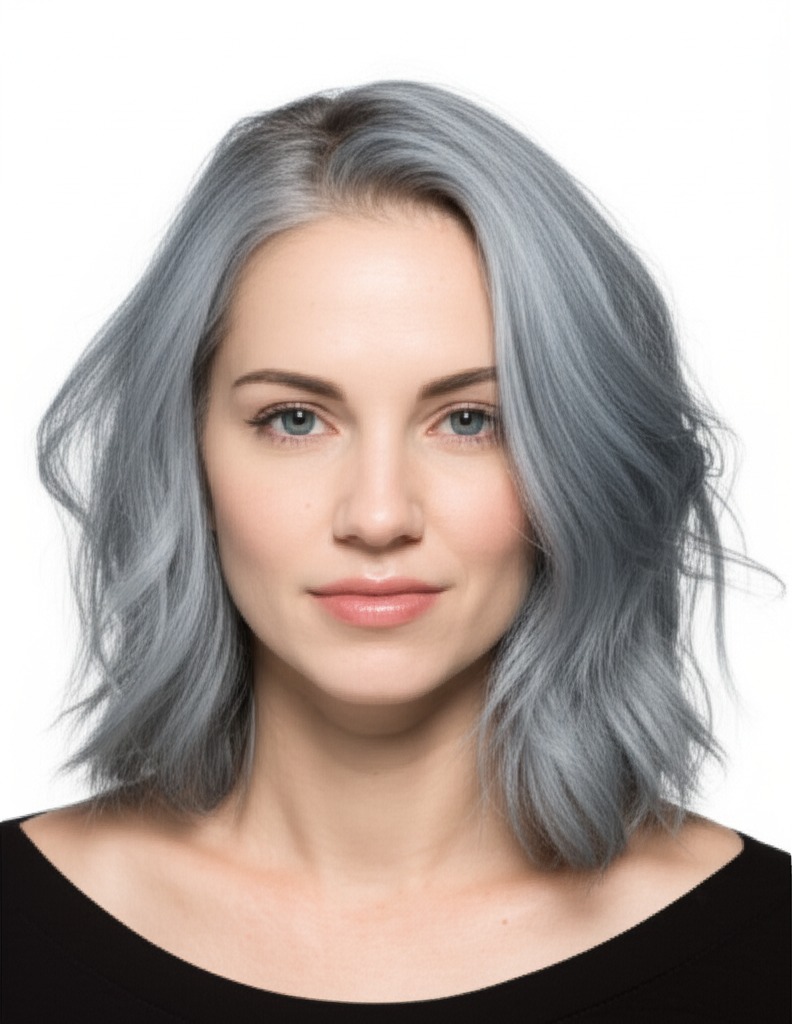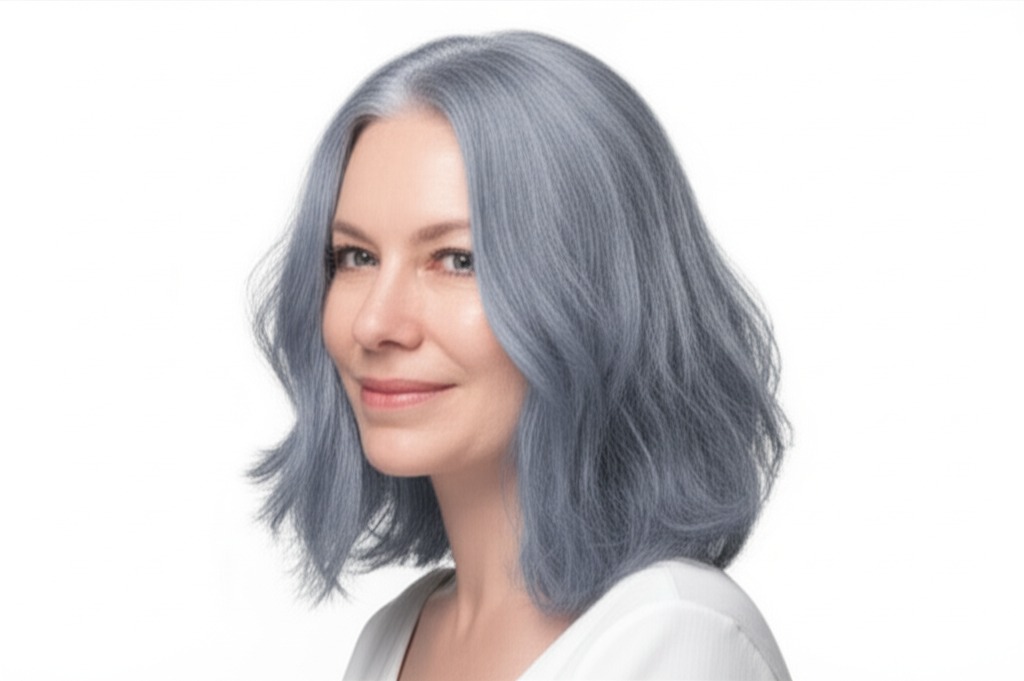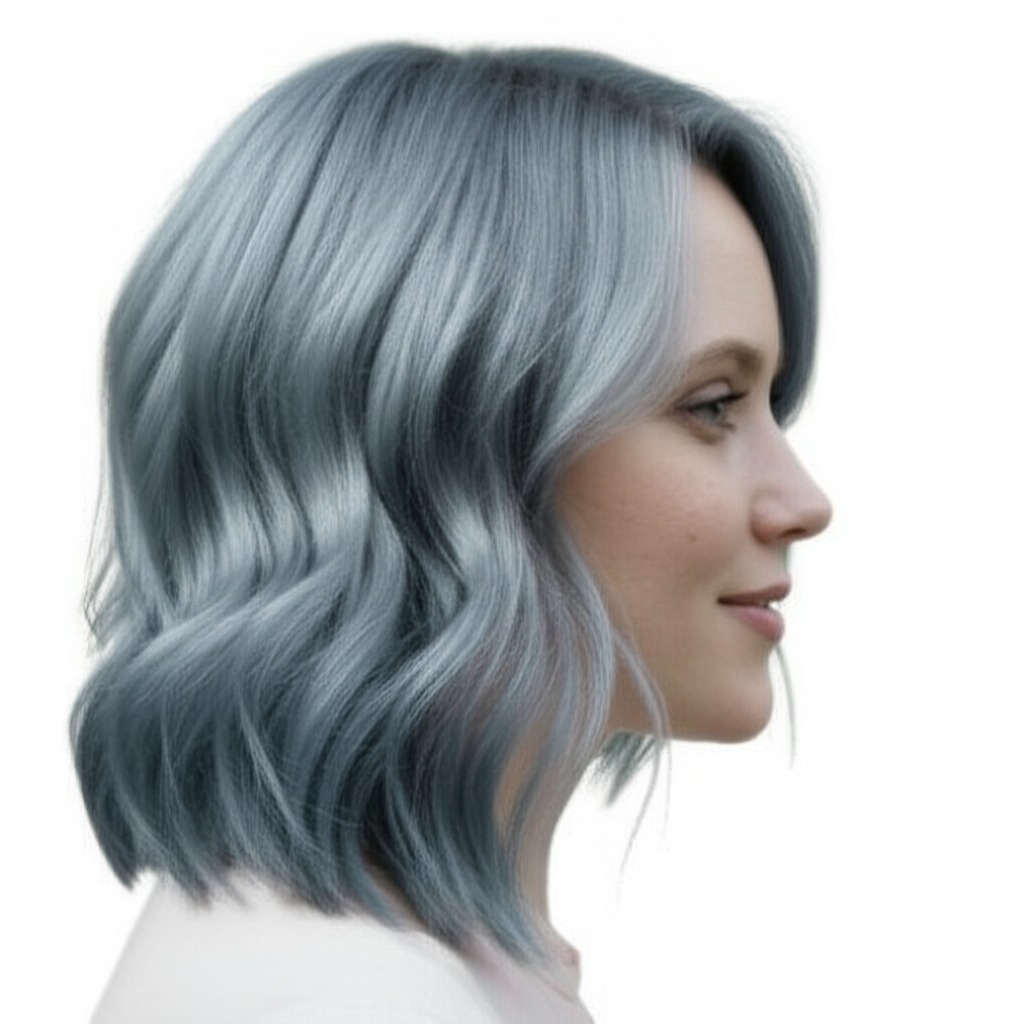#Slate Gray Hair: A Modern Guide to Cool-Toned Elegance
Slate gray hair is having a moment – and for good reason! It’s sophisticated, edgy, and surprisingly versatile. But achieving that perfect cool-toned grey isn't as simple as picking up the first box of dye you see. This guide will walk you through everything you need to know about slate gray hair color, from understanding its nuances to keeping it looking gorgeous for longer.
#1. Defining Slate Gray: Undertones & Depth
Slate gray isn’t just “gray.” It's a specific shade with unique characteristics. Think of the color of slate roofing tiles – that cool, muted grey-blue hue is what we're aiming for.
- Undertone: The most crucial aspect! Slate gray is always cool-toned. It leans towards blue and violet, which gives it its distinctive depth and prevents unwanted warmth (like brassiness). Warm grays exist, but they are distinct from slate grey.
- Depth/Levels: Depth refers to how dark or light the color is. Levels range from 1 (very dark) to 10 (lightest). Slate gray can work across a wide range of levels:
- Level 4-6 (Medium Brown Base): A softer, more muted slate gray that’s easier to achieve and maintain. This depth often requires less lifting (bleaching) from the natural base color.
- Level 7-9 (Light Brown/Dark Blonde Base): A brighter, more noticeable slate gray. Requires significant lightening for best results.
- Level 10+ (Very Light Blonde Base): A pale, almost silver-grey slate that requires the most lifting and is prone to fading faster.
#2. Who Does Slate Gray Flatter?
While anyone can rock slate gray with proper technique and care, certain features make it particularly stunning.
- Skin Tone & Undertone: Cool skin tones are your best bet! Think fair porcelain skin with pink or blue undertones, olive skin with cool tendencies, or even deeper complexions that lean towards ashy rather than golden. If you have warm (yellow/golden) undertones, slate gray might make you look washed out unless expertly balanced by a skilled colorist.
- Eye Colors: Slate gray complements a wide range of eye colors: blue, green, grey, and even hazel eyes can all look incredible with this shade. Brown eyes can also work well if the slate gray is deep enough to create contrast.
- Natural Level Starting Points: The darker your natural hair color, the more processing (lightening) will be required.
- Dark Browns (Levels 1-4): Expect multiple salon visits and a significant investment of time and money.
- Medium Browns (Levels 5-7): A good starting point – less lifting needed, but still requires professional expertise.
- Light Brown/Dark Blonde (Levels 8-9): Easier to achieve the desired slate gray shade with less damage.
- Very Light Blonde (Level 10+): The closest you can get without much lightening; however, maintaining color vibrancy will be crucial.
#3. Technique Options: Finding Your Perfect Approach
The right technique is vital for a seamless and beautiful result.
- Single-Process: This involves applying the slate gray dye evenly across all of your hair. Best suited for those with already light bases (levels 8-10) or as a root touch-up on previously colored hair.
- Highlights/Lowlights: Adding subtle highlights or lowlights can create dimension and soften the overall look, especially if you have darker natural hair. Silver or cool beige highlights work well to break up density.
- Babylights: Very fine, delicate highlights that mimic a naturally grown-out color. A great option for achieving a softer slate gray effect on medium to dark bases.
- Gloss/Toner: A gloss is used after lightening to refine the tone and add shine. Toners are crucial for preventing brassiness and ensuring the perfect cool, slate grey hue.
- Balayage-Effect vs. Solid: Balayage (or a similar hand-painted technique) creates a softer, more natural transition of color from root to tip, avoiding harsh lines. This is often preferred over solid application, especially for those with darker hair or who want a low-maintenance look.
#4. Maintenance & Longevity: The Real Talk
Slate gray requires commitment! Here's what you need to know.
- Wash Frequency: Limit washing to 2-3 times per week (or less!) to preserve color vibrancy.
- Toner Refresh: Toners fade quickly, especially on lighter levels. Expect a toner refresh every 4-8 weeks, depending on your hair’s porosity and how often you wash it.
- Root Growth Pacing: The contrast between slate gray hair and natural roots can be striking (and potentially beautiful!). However, if you prefer a more seamless look, root touch-ups will be necessary every 6-12 weeks.
- Budget/Time Planning: This is not a budget-friendly or quick color transformation! Expect to spend $200-$500+ per salon visit, with multiple appointments required initially. Time commitment can range from 3-6 hours per appointment.
#5. Seasonality & Pairing With Cuts: Style It Your Way
Slate gray is surprisingly versatile and adapts well to different styles and seasons.
- Bob/Lob: A sleek bob or lob (long bob) emphasizes the cool, modern vibe of slate gray.
- Long Layers: Long layers create movement and dimension, softening the intensity of the color.
- Pixie Cut: A pixie cut showcases a bold and edgy aesthetic when paired with slate gray.
- Seasonal Tweaks: Add subtle violet or blue glosses in winter for extra depth and coolness. In summer, consider slightly lightening the base for a brighter, more ethereal look.
- Event/Occasion Picks: Slate gray is perfect for work (professional yet stylish), daytime events (sophisticated and understated), evening looks (dramatic and glamorous), and even weddings – especially if you’re aiming for a modern bridal vibe.
#6. At-Home Care: Protecting Your Investment
Proper at-home care is essential to maintain your slate gray color.
- Sulfate-Free Shampoo: Sulfates strip away moisture and fade color quickly. Opt for sulfate-free formulas specifically designed for colored hair.
- Clarifying Cadence: While sulfate-free shampoos are great, buildup can still occur. Use a clarifying shampoo once or twice a month to remove residue.
- Heat Protection: Always use a heat protectant spray before using any hot styling tools (blow dryers, straighteners, curling irons).
- Color-Safe Styling Tips: Avoid harsh chemicals and excessive sun exposure, which can fade the color. Rinse hair with cool water to seal the cuticle and lock in color.
- Product Checklist: Sulfate-free shampoo & conditioner, color-safe heat protectant spray, purple/silver toning mask (for maintenance), leave-in conditioner.
#7. Common Pitfalls: Avoiding Color Disasters
Let's address potential problems and how to prevent them.
- Brassiness: The biggest concern! This happens when underlying warm tones peek through the slate gray dye. Prevent it with a cool-toned toner and purple shampoo/mask treatments.
- Banding: Uneven color application, often caused by incorrect product placement or inconsistent saturation. This is best addressed by a professional during the initial coloring process.
- Patchiness: Can occur if hair isn’t lifted evenly before applying the slate gray dye. Again, crucial to have this done professionally for even results.
#8. Pros & Cons: Weighing Your Options
Pros:
- Unique and Stylish: Slate gray is a bold and fashionable choice.
- Versatile: Works well with various cuts and styles.
- Can be surprisingly flattering: Cool tones can enhance certain skin complexions.
Cons:
- High Maintenance: Requires frequent salon visits and toner touch-ups.
- Fade Risk: Slate gray tends to fade faster than warmer colors.
- Significant Investment: Expensive in terms of time, money, and potential damage.
#9. Salon Consultation Script: Setting Expectations
Before committing to slate gray hair, a thorough consultation is key! Here are some prompts for your stylist:
- "I'm interested in achieving a slate gray color. Can you assess my natural level and determine the best technique?"
- "What’s the estimated time commitment and cost involved in this process?"
- “How many salon visits will I need initially, and what is the expected maintenance schedule?”
- "Can we discuss potential challenges like brassiness or fading, and how to mitigate them?"
- "I'm concerned about damage. What steps can be taken to minimize it during the coloring process?"
#10. FAQs: Your Burning Questions Answered
- Is slate gray damaging to my hair? Any lightening process involves some level of potential damage, but a skilled stylist will prioritize minimizing this with appropriate products and techniques.
- Can I achieve slate gray at home? While possible, it's highly recommended to go to a professional. Achieving the correct tone and avoiding damaging your hair is difficult without experience.
- How long does slate gray last before fading? The color typically fades within 4-8 weeks, depending on factors like porosity, washing frequency, and product usage.
- What’s the difference between slate gray and silver? Silver often has a more metallic sheen while slate grey is muted with blue/violet undertones.
- Can I go from brown hair to slate gray in one appointment? Generally no – multiple sessions are needed, especially for darker bases. Rushing the process can lead to uneven color and significant damage.
- Will my roots be very noticeable as they grow out? The contrast will depend on your natural root level and the chosen technique (balayage vs. solid). A good stylist will help you plan a growth strategy that minimizes harsh lines.
